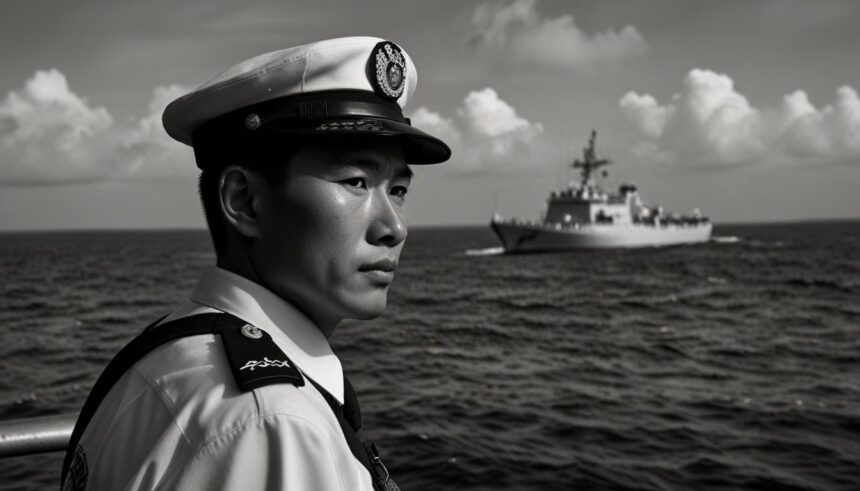Rising tensions as China employs new tactics to coerce Taiwan, including economic isolation and military threats, sparking fears over regional stability and global implications.
China’s New Pressure Tactics on Taiwan and Rising Tensions
On May 23, 2024, the Taiwan Coast Guard released a photo showing a Taiwan Coast Guard member monitoring a Chinese navy vessel near Pengjia Islet, north of Taiwan. Increasing concerns over Taiwan’s autonomy and its potential suppression by the Chinese Communist Party were amplified by China’s recent activities and statements.
A report by the Center for Strategic and International Studies (CSIS) highlights China’s strategy to coerce Taiwan through a quarantine, a form of economic isolation that falls below the threshold of war. This tactic involves the China Coast Guard, maritime militia, and other agencies restricting maritime and air traffic to Taiwan. This maneuver would disrupt the island’s economy by hindering access to vital supplies.
China’s Defense Minister, Adm. Dong Jun, recently reiterated China’s resolute stance against Taiwan independence at the Shangri-La Dialogue defense summit in Singapore. This follows incidents in the South China Sea where Chinese Coast Guard vessels clashed with Philippine Navy boats.
Furthermore, recent Chinese activities include ramped-up military drills and gray zone tactics around Taiwan, increasing the economic and military pressure. Beijing’s enhanced strategy includes potentially targeting Taiwan’s major ports, like Kaohsiung, to economically isolate the island.
Chinese courts have introduced new guidelines threatening severe punishments, including the death penalty, for “diehard” advocates of Taiwan’s independence. These guidelines, affecting individuals promoting Taiwan’s membership in international organizations and other acts perceived as secessionist, augment China’s legal framework under the 2005 anti-secession law.
In response, Taiwan’s Mainland Affairs Council has condemned Beijing’s measures, maintaining that Chinese laws have no jurisdiction over Taiwan. Taiwan’s President Lai Ching-te, who recently took office, has continuously advocated for dialogue with China, though his efforts have been rebuffed.
These developments underscore the escalating tension between China and Taiwan, drawing international attention to the region’s stability and the potential impact on global economic and political dynamics.





